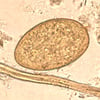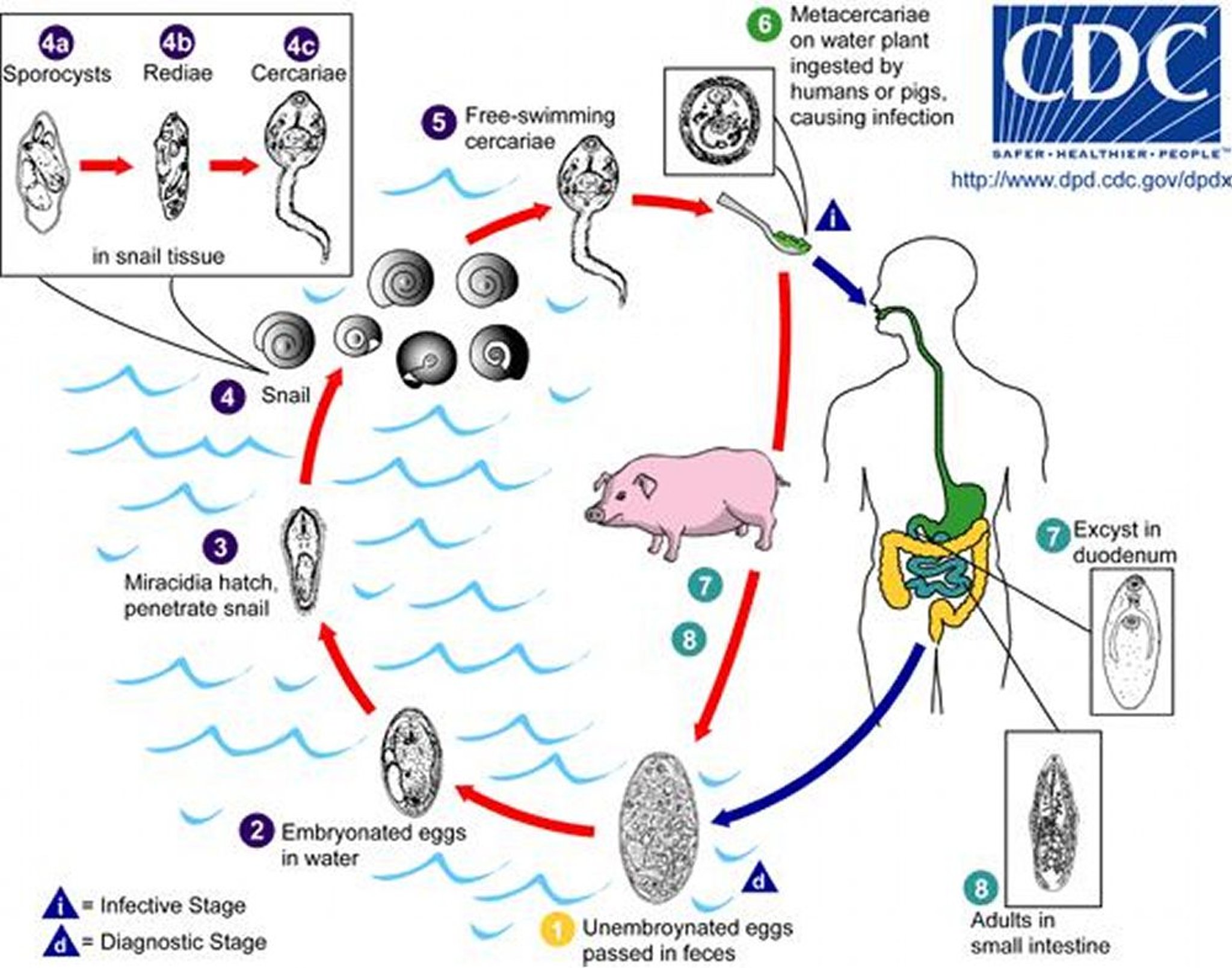Fasciolopsiasis is infection with the intestinal fluke Fasciolopsis buski, which is acquired by eating aquatic plants or ingesting contaminated water.
Flukes are parasitic flatworms that infect various parts of the body (blood vessels, gastrointestinal tract, lungs, liver) depending on the species.
F. buski is present in the intestine of pigs in many parts of Asia and the Indian subcontinent. The prevalence of infection is highest among children in endemic areas. F. buski is also called the giant intestinal fluke because it is largest fluke that infects humans.
Human infection is typically acquired by ingesting contaminated water or eating aquatic (freshwater) plants, particularly bamboo shoots, watercress, or water chestnuts, that bear infectious metacercariae. F. buski requires a snail intermediate host for completion of its life cycle. The snails used by F. buski are small planorbid snails in the genera Hippeutis and Segmentina (1, 2). Adult worms attach to and ulcerate the mucosa of the proximal small bowel. They grow to about 20 to 75 mm by 8 to 20 mm. Adult worms have a life span of about 1 year.
Image from the Centers for Disease Control and Prevention Image Library.
Fasciolopsiasis is generally asymptomatic. In heavy infections, symptoms typically begin 30 to 60 days after exposure and can include anorexia, vomiting, diarrhea, abdominal pain, and signs of malabsorption. Peripheral eosinophilia may be present.
In severe cases, malabsorption can result in edema and ascites due to protein loss. Vitamin B12 deficiency and anemia can also occur.
Diagnosis of fasciolopsiasis is based on detecting eggs or, less commonly, adult worms in the feces or other gastrointestinal fluids (vomitus, bile, or gastroduodenal samples obtained via biopsy). F. buski eggs are broadly ellipsoidal, operculated and measure 130 to 150 micrometers long by 60 to 90 micrometers wide. The eggs are difficult to distinguish microscopically from those of Fasciola hepatica.
CDC/DPDx
Treatment of fasciolopsiasis is with praziquantel orally 3 times a day for 1 day.of fasciolopsiasis is with praziquantel orally 3 times a day for 1 day.
Prevention involves not drinking contaminated water or eating freshwater plants in areas where Fasciolopsis buski is endemic (2).
References
1. Centers for Disease Control and Prevention: DPDx–Laboratory Identification of Parasites of Public Health Concern: Fasciolopsiasis. June 5, 2024. Accessed July 2, 2025.
2. Centers for Disease Control and Prevention: Fasciolopsiasis: About Fasciolopsiasis. April 25, 2024. Accessed July 11, 2025.
Drugs Mentioned In This Article




